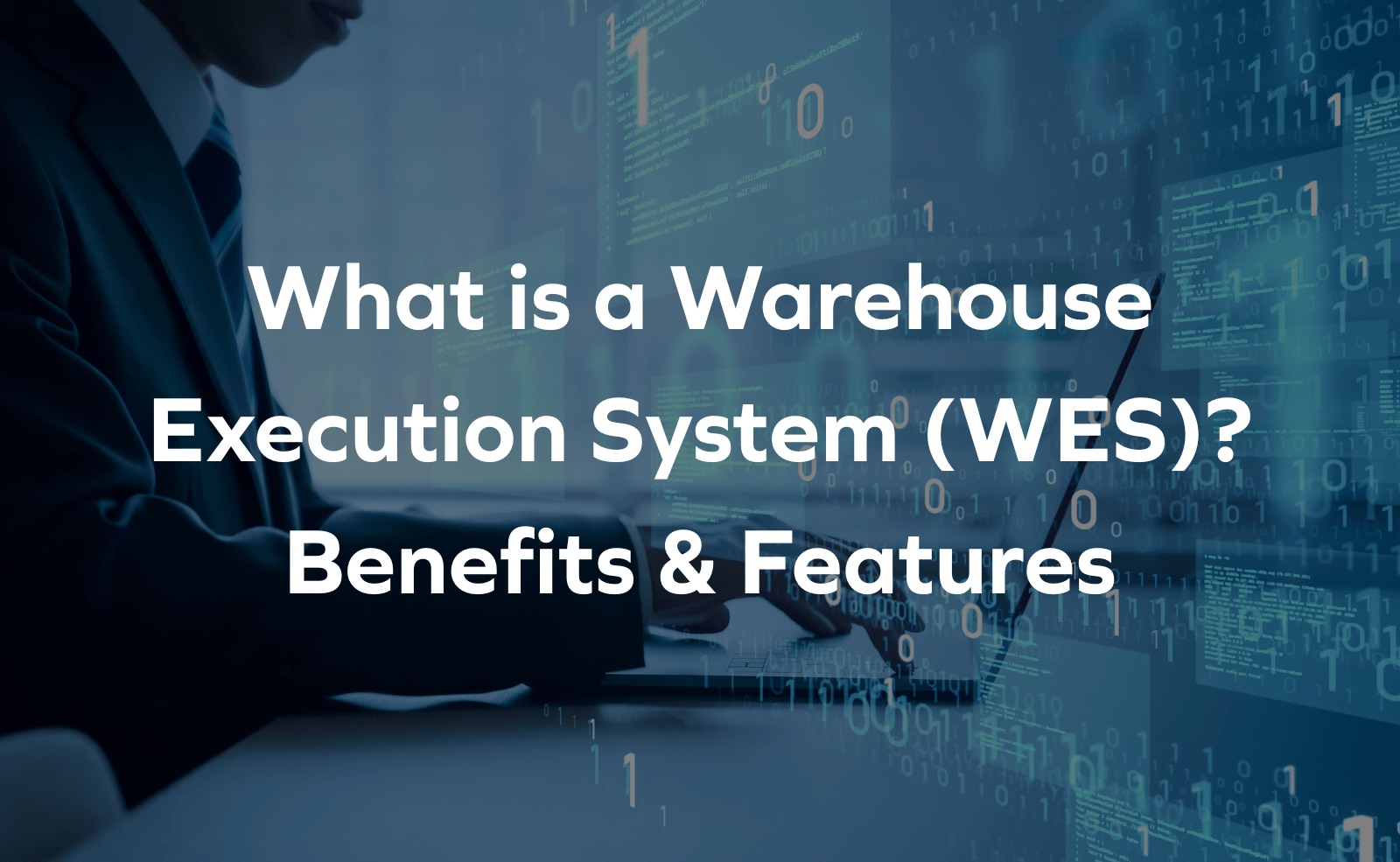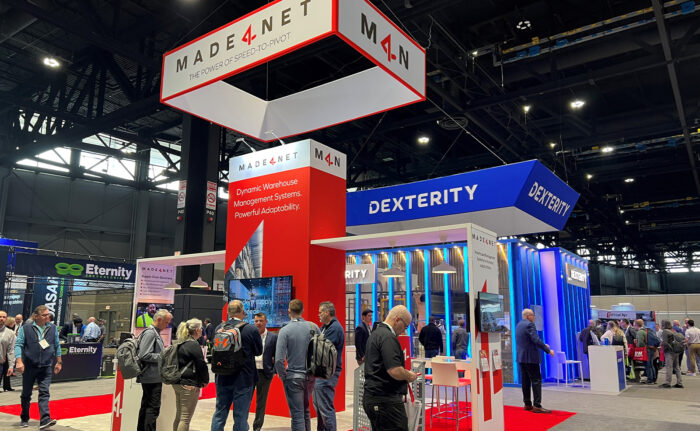
As warehouses become more complex and automation technologies continue to evolve, the need for a Warehouse Execution System (WES) has never been greater. A WES acts as the real-time decision engine that synchronizes both automated systems and manual workflows, ensuring seamless operations across all facets of the warehouse. By integrating with other systems like a cloud-based warehouse management system (WMS), Enterprise Resource Planning (ERP) solution, and automation technologies, a WES can optimize task execution, improve labor efficiency, and enhance overall productivity.
In this post, we’ll cover:
- What is a warehouse execution system (WES)?
- How does a warehouse execution system work?
- Why do I need a WES?
- What are the benefits of a warehouse execution system?
- What are the most important features of a warehouse control system?
- What are common challenges when selecting a WES?
- What related systems are relevant in a WES decision?
What is a Warehouse Execution System (WES)?
A Warehouse Execution System (WES) is software that orchestrates real-time warehouse operations, optimizing the flow of goods, labor, and automation within a facility. It bridges the gap between a Warehouse Management System (WMS) and Warehouse Control System (WCS) by dynamically managing tasks such as order prioritization, wave and batch processing, and automated material handling system coordination.
While a WMS focuses on inventory control, order management, and high-level warehouse planning, a WES optimizes and directs execution in real time, ensuring that resources—both human and automated—are being utilized efficiently. Unlike a WCS, which primarily controls automation like conveyors and sorters, a WES provides decision-making intelligence, helping warehouses adjust to shifting demand, labor availability, and order urgency.
In modern warehouses, particularly those with high levels of automation, robotics, and real-time order fulfillment needs, a WES can enhance a WMS by improving throughput, reducing bottlenecks, and synchronizing complex workflows to keep operations running smoothly.
How Does a Warehouse Execution System Work?
A WES functions as the real-time decision engine of a warehouse, dynamically managing workflows to optimize efficiency. It continuously monitors order demand, labor availability, and automation capacity, then intelligently assigns tasks to ensure smooth operations.
Here’s how it works:
- Order Prioritization & Release – A WES evaluates incoming orders and determines the most efficient sequence for fulfillment, grouping tasks into waves or batches to maximize throughput.
- Task Orchestration – It assigns tasks to workers and automation systems based on real-time conditions, ensuring labor and equipment are used optimally. This prevents congestion at pick stations and eliminates idle time.
- Automation Synchronization – For facilities with robotics, conveyors, or sortation systems, the WES coordinates these assets to maintain a steady flow of goods, ensuring automation operates at peak efficiency.
- Dynamic Bottleneck Management – Unlike static planning systems, a WES continuously monitors performance and adjusts workflows on the fly, rerouting orders or reallocating resources to avoid slowdowns.
- Real-Time Visibility & Adjustments – Warehouse managers gain live insights into order progress, equipment status, and worker productivity, allowing them to make proactive decisions to maintain efficiency and meet SLAs.
By reacting in real time to changing warehouse conditions, a WES helps increase order fulfillment speed, reduce downtime, and improve overall efficiency, making it an essential tool for modern, high-volume distribution centers.
Why Do I Need a WES?
A WES is essential for high-volume, complex, or highly automated warehouses that need real-time coordination between labor, orders, and automation. If your warehouse struggles with bottlenecks, inefficient order flow, or underutilized automation, a WES can help by dynamically optimizing workflows and ensuring every resource is working at peak efficiency.
What are the Benefits of a Warehouse Execution System?
A WES offers several key benefits that can significantly enhance warehouse efficiency and productivity:
WES Benefit #1: Optimized Automation
A WES ensures that conveyors, sorters, robotics, and other automated systems work seamlessly with labor, preventing idle time and maximizing throughput across your operations.
WES Benefit #2: Dynamic Handling of Fluctuating Order Volumes
When demand spikes, a WES can adjust workflows in real-time to balance workloads and avoid congestion, ensuring your warehouse can efficiently handle fluctuations in order volume.
WES Benefit #3: Real-Time Decision Making
Unlike a WMS that focuses on pre-planning tasks, a WES provides continuous monitoring and real-time adjustments, re-allocating resources and prioritizing tasks to eliminate bottlenecks and delays.
WES Benefit #4: Improved Labor Efficiency
A WES intelligently optimizes labor allocation, ensuring workers are directed to high-priority tasks and minimizing unnecessary movement, which boosts productivity and reduces downtime.
WES Benefit #5: Faster Order Fulfillment
By intelligently prioritizing and releasing orders, a WES ensures smooth movement of goods through picking, packing, and shipping, leading to faster and more accurate order fulfillment that meets customer expectations.
What are the Most Important Features of a Warehouse Execution System?
Like most enterprise software, a WES will have varying features. However, the ones that come standard are usually the ones that make it an essential part of an operation. These include:
WES Feature #1: Workload Balancing
Distributes tasks efficiently across labor and automation.
WES Feature #2: Task Prioritization
Dynamically adjusts orders based on urgency and demand.
WES Feature #3: Order Orchestration
Synchronizes order fulfillment steps for seamless processing.
WES Feature #4: Automated Routing
Directs products through conveyor systems, sorters, and picking zones.
WES Feature #5: Real-Time Data and Dashboards
Provides live tracking of warehouse activities.
WES Feature #6: Labor and Equipment Optimization
Assigns workers and machinery based on workload needs.
WES Feature #7: Exception Handling
Identifies and resolves operational disruptions automatically.
WES Feature #8: Integration with WMS and ERP
Connects with existing warehouse and enterprise systems.
WES Feature #9: Automation Control
Interfaces with robotics, AS/RS, and other warehouse technologies.
WES Feature #10: Wave and Waveless Processing
Supports traditional wave-based picking or real-time fulfillment models.
What are Common Challenges When Selecting a WES?
Selecting a WES can be a complex process due to its comprehensive nature. Like a WCS or a WMS, a WES introduces additional challenges that require careful consideration. Some of the most common challenges include:
- Integration Complexity: WES must seamlessly integrate with existing WMS, ERP systems, and various automation technologies. Ensuring compatibility and smooth data flow across these platforms can be complex and requires thorough evaluation.
- Operational Disruption: Implementing a WES can lead to significant changes in warehouse processes. Managing this transition to minimize disruptions and ensure continuous operations is a critical challenge.
- Data Accuracy: A WES relies heavily on accurate, real-time data to function effectively. Ensuring data integrity and establishing robust data management practices are essential to prevent errors and inefficiencies.
- Cost: A cost-benefit analysis is essential for operations to ensure they find a balance between the initial investment with system capabilities. Opting for a cheaper solution will almost always lead to complications in the future.
- Scalability: Operations must have a deep understanding of their growth goals to ensure the chosen system can keep up with increased product volumes and the addition of new technological processes.
- Implementation: Operations must have a detailed plan in place to ensure the implementation process doesn’t disrupt daily operations. Selecting a WES that can be deployed within a reasonable timeframe is critical.
- Vendor relationship: When choosing WES software, the vendor relationship is just as important as how well the system works. Get details on the level of support the vendor will provide for troubleshooting, updates, and maintenance.
- Training: Invest in training to ensure success. Some systems may have a steep learning curve. Take the time to create and disseminate robust training resources and plan for ongoing education to ensure the system doesn’t become a roadblock due to user error.
- Customization: Warehouses often have unique workflows and requirements. A WES that cannot be tailored to specific needs may force businesses to alter their processes, leading to reduced efficiency.
What Related Systems are Relevant in a WES Decision?
Related Systems to Consider in a WES Decision
When selecting a WES, it’s essential to consider how it will integrate with other related systems. Here’s a short checklist of relevant systems to evaluate:
Enterprise Resource Planning (ERP) – Integration with the ERP system is crucial for synchronized financial, operational, and supply chain management across the business.
Transportation Management System (TMS) – A WES should align with your TMS for coordinated transportation planning and visibility into shipments.
Labor Management System (LMS) – Connecting the WES with LMS enables optimized labor allocation and performance tracking across warehouse activities.
Automation & Robotics Systems – If your facility uses automation, the WES should be able to manage and optimize robotics, pick-and-place systems, and other equipment.
Data Analytics/Business Intelligence (BI) Tools – Integration with analytics platforms provides insights into operational performance, helping to fine-tune processes and improve decision-making.
Material Handling Systems (MHS) – Ensure the WES can coordinate effectively with material handling solutions for efficient goods movement.
Evaluating how a WES integrates with these related systems will help you select a solution that aligns with your operational needs and enhances overall warehouse performance.
Is a WES Right For Me?
As operational complexity and automation in warehouses continue to grow, the need for a WES becomes more apparent. According to Amit Levy, Executive Vice President of Sales and Strategy at Made4net, the rise in warehouse automation is a key factor driving the adoption of WES.
“Today, much more automation is being used in warehouses, whether in the form of conveyors, sortation, automated storage and retrieval systems, or mobile robots,” says Levy. “There are also more operations doing omni-channel, so the complexity of running a distribution center (DC) increases and, as a result, makes it more challenging for WMS solutions to support all these automated components.”
If your warehouse is increasingly adopting automation and managing complex workflows, a WES may be the right solution for you. Our experts have the insight and technical know-how to help you determine exactly what your operation needs, so get in touch!


